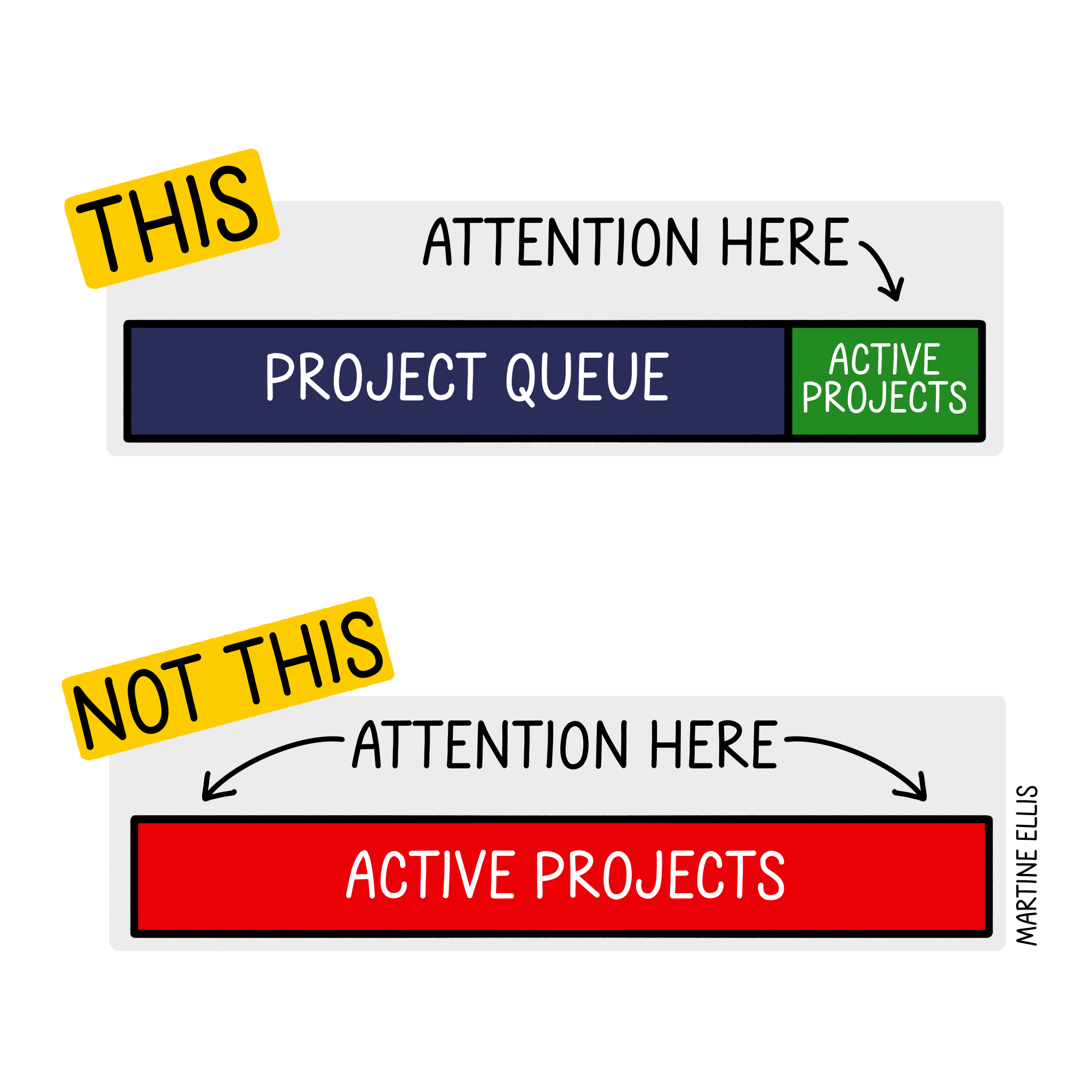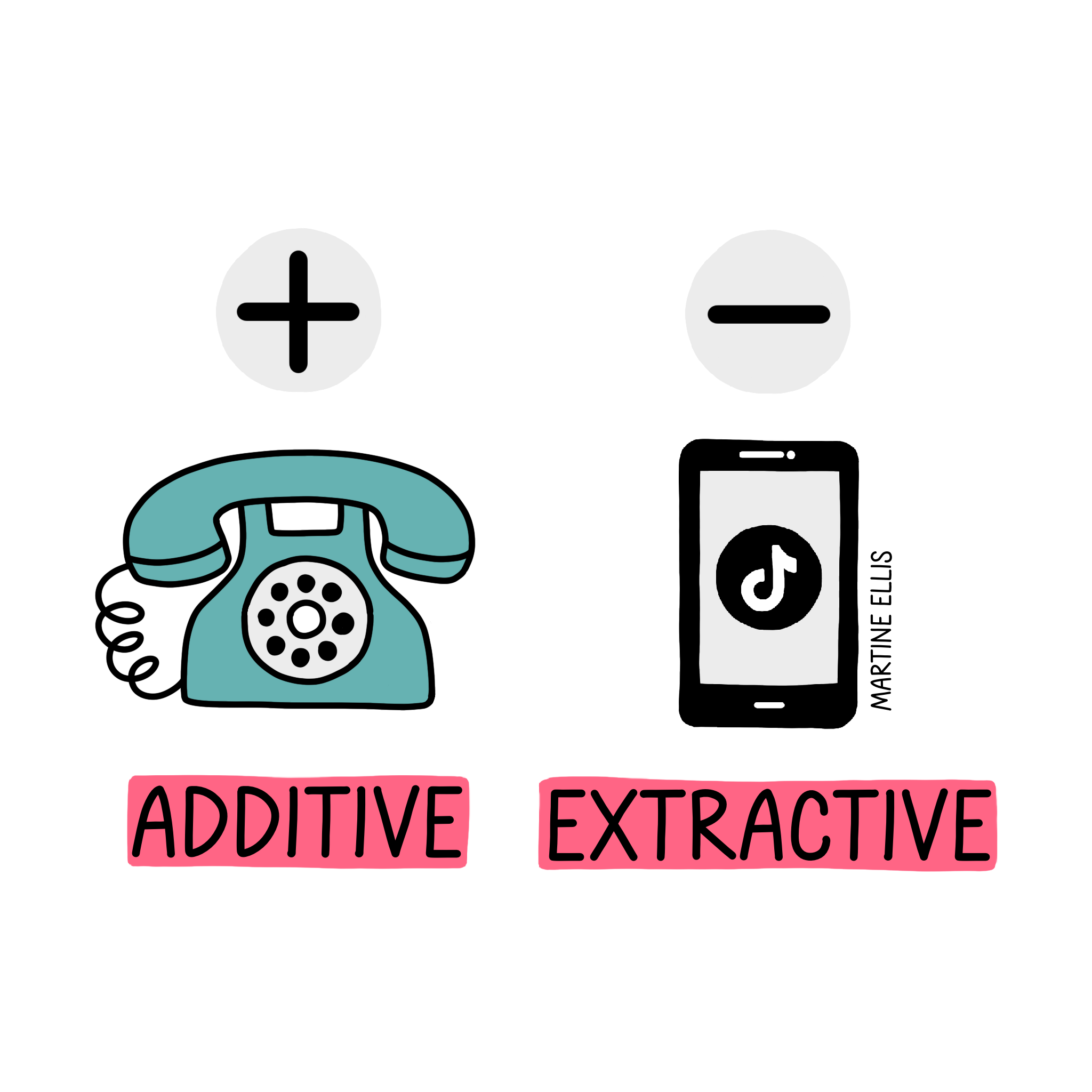Writing + Doodles
Why You Need a Someday Maybe List
I was working with a coaching client recently who was struggling with the size of their to-do list. They were overwhelmed and couldn’t see a way to get to the bottom of it.
Do You Have a Project Queue?
Too many active projects drain your energy and make you less productive.
The Difference Between a To-Do List and a Today List
For many people, their to-do list is a source of stress. Often, that’s because it’s seen as something to finish (I mean, completely finish: so it's empty).
Are Your Technology Choices Additive or Extractive?
I came across some new (to me) terminology in an article from Cal Newport’s blog that I think is useful: additive and extractive technology.
Oliver Burkeman's 3/3/3 Technique for Getting Things Done
Have you tried Oliver Burkeman's 3/3/3 Technique for planning your work?
Manage Your Workload With Due Dates and Do Dates
You're doing everything right. You have a to-do list, and it's up to date. Everything has a due date. So how come deadlines still seem to take you by surprise, and you end up rushing to complete things on time?
Being Busy is Not the Same as Being Productive
Being busy is not the same as being productive.
What's in Your Feel Better Kit?
Because I write, doodle, and speak about productivity, you might assume I’m in a permanent state of productive flow: focused, energised, and ending each day with a clear to-do list. Let me reassure you: that’s not always the case.
Systems, Tools, and a Very Expensive Pair of Trainers
When it comes to sustainable productivity, I often talk about "systems over tools". Without a system, the best tool in the world won’t get you very far. Task management and note-taking apps are good examples.
Do You Have a Kairos Ritual?
According to Merriam-Webster, kairos means “a time when conditions are right for accomplishing a crucial action”.
Sleep is Productive
Growth happens when you sleep. Your body doesn’t just switch off; it gets to work.
The New Golden Rule of Leadership
The best leaders I’ve worked for followed what Mike Fisher calls The New Golden Rule.
What Being a Slow Runner Taught Me About Sustainable Productivity
I’m a slow runner. Not "slow for a beginner" (I’ve run two marathons). I’m just... slow.
Rethinking the 8-Hour Work Day (Because You’re Not a Robot)
An 8-hour workday doesn’t mean 8 hours of deep, focused work.
The Jevons Paradox and Sustainable Productivity
Have you ever heard of the Jevons Paradox? It’s the idea that when something becomes more efficient, we use it more, not less.
Do Fewer Things (and Get More Done)
We all know what it’s like to manage multiple projects at the same time. It’s become a common part of modern work life, and we assume, “This is just how work is.”
How I Use PARA to Organise My Digital Life
Rules can be frustrating and limiting, but sometimes the right ones provide helpful scaffolding.
Three Reasons Why You Shouldn't Reply to Emails Immediately
I need to be honest: my email habits have slipped lately. This post is a note to self, as much as it is a gentle nudge for you.
47 Things I've Learned
I am writing this post on my 47th birthday, which seems bizarre, as in my head, I'm about 28. In no particular order, here are 47 things I’ve learned about wellbeing, health, and productivity.
What is Time Confetti?
Time confetti is a term coined by researcher Brigid Schulte. It describes the tiny pockets of time we all experience: waiting for the kettle to boil, standing in a queue, or pausing between meetings.




















